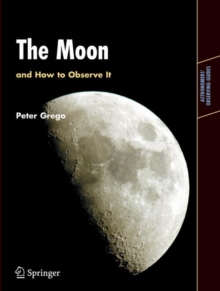
Supernovae : and How to Observe Them PDF
by Martin Mobberley
Part of the Astronomers' Observing Guides series
Description
Supernova explosions, which mark the deaths of massive stars or of white dwarf stars in binary systems,are unbelievably violent events.
Despite occurring in gal- ies many millions of light-years away,amateur telescopes can reveal these colossal explosions,and even discover them.
In the past 25 years,the amateur astronomer's contribution to supernova research has been staggering.
Visual variable star observers with access to large-aperture amateur telescopes have contributed a steady stream of magnitude estimates of the brightest and closest supernovae.
In addition, with the increasing availability of robotic telescopes and CCD techn- ogy, more and more amateurs are discovering supernovae from their backyards.
Worldwide, there have been more than 400 supernovae discovered by amateur astronomers using amateur telescopes.
Supernova research has never been so important. Recent professional measurements of the most distant Type Ia sup- novae have revealed the staggering and unexpected discovery that the acceleration of the Universe is actually increasing!
This,in turn,has led to a new phrase, dark energy,entering the astronomical vocabulary; a mysterious force,in opposition to gravity, driving the accelerated expansion.
Although amateurs cannot study the farthest supernovae,their discovery and measurement of the closer examples helps to re?ne the science that is the hottest topic in cosmology today; that is,pinning down the history of the Universe and how much mass and energy exists within it today.
As always, amateur astronomers are making a valuable contribution, and, hopefully, this book might inspire a few more to monitor and discover new supernovae.
Martin Mobberley Suffolk, U. K.
Information
-
Download - Immediately Available
- Format:PDF
- Publisher:Springer New York
- Publication Date:05/07/2007
- Category:
- ISBN:9780387462691
Other Formats
- Paperback / softback from £22.59
Information
-
Download - Immediately Available
- Format:PDF
- Publisher:Springer New York
- Publication Date:05/07/2007
- Category:
- ISBN:9780387462691










